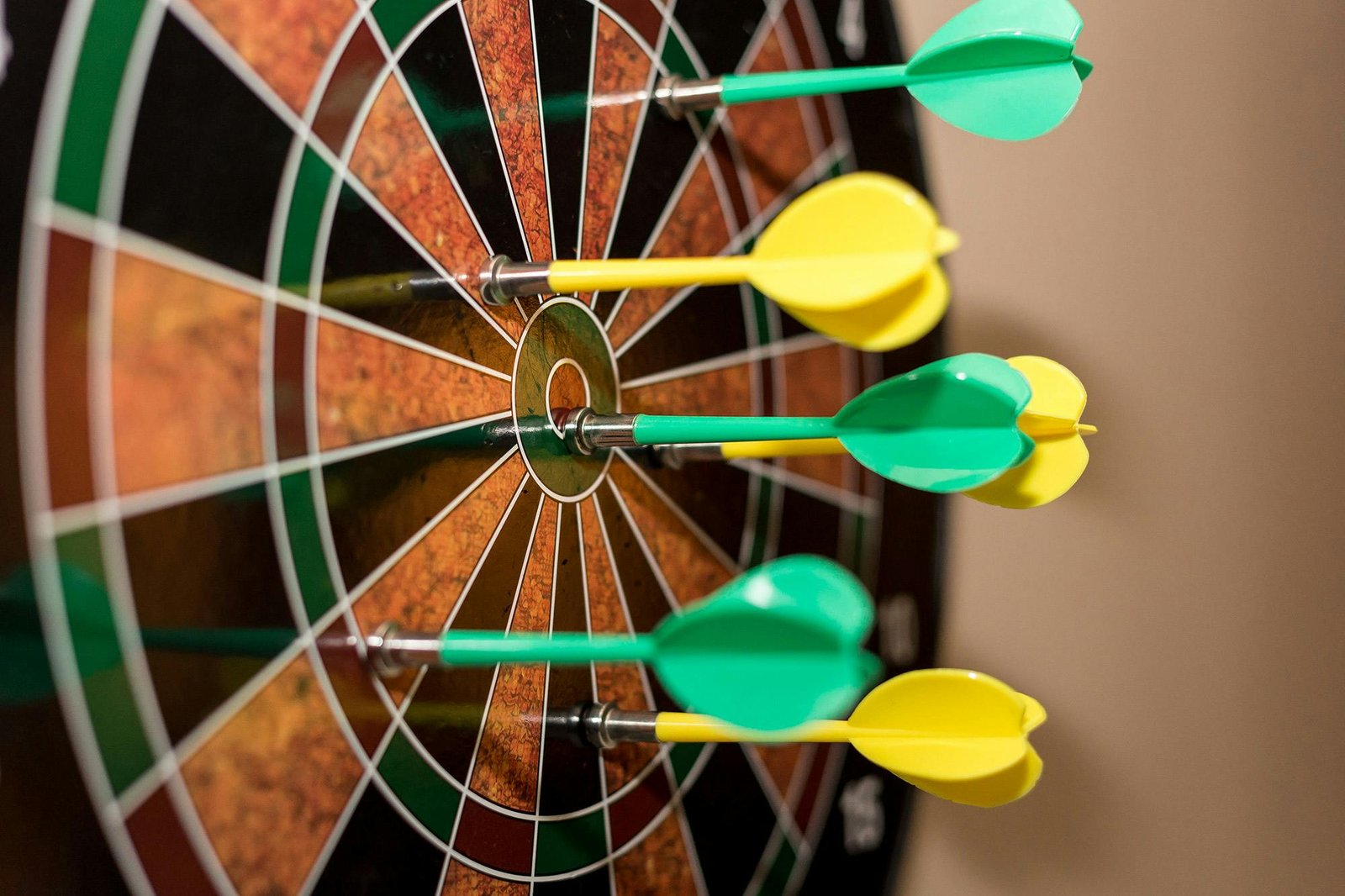Darts is a popular game enjoyed by people of all ages around the world. It’s a game of skill, precision, and strategy, often played in pubs, homes, and even professional tournaments. This article will provide an in-depth look at the game of darts, from its history and rules to the equipment used and popular playing styles.
A Brief History of Darts
While the exact origins of darts are unclear, it’s believed to have evolved from similar games played by ancient civilizations. The modern version of darts gained popularity in England during the 18th century. The game’s simplicity and accessibility made it a favorite pastime among working-class people.
Understanding the Dartboard
The heart of the game is the dartboard, a circular target divided into segments of different colors and values. A typical dartboard consists of:
Bullseye: The center of the board, worth 50 points (double bullseye) or 50 points (single bullseye).
Outer bullseye: Surrounding the bullseye, worth 25 points.
Treble ring: The outermost ring, where scores are tripled.
Double ring: The middle ring, where scores are doubled.
Single ring: The inner ring, where scores are the face value of the segment.
The Rules of Darts
The basic rules of darts vary slightly depending on the specific game mode being played, but the core principles remain the same. Each player throws three darts at the board in turn. The goal is to accumulate the highest possible score within a given number of rounds.
Popular game modes include:
01: Players start with a predetermined score (e.g., 501) and must reduce it to zero. The first player to reach zero wins.
Cricket: Players aim to “close” each number on the board by hitting it three times. The first player to close all numbers wins.
Round the Board: Beginning with number one, players must strike each number on the board in numerical sequence.
Dart Equipment
To play darts, you’ll need the following equipment:
Dartboard: A circular target with numbered segments.
Darts: Projectile weapons typically made of brass, tungsten, or steel. Darts have a barrel, flight, and shaft.
Dartboard surround: A protective ring that surrounds the dartboard to prevent damage.
Dartboard stand: A stand to hold the dartboard securely.
Dart Playing Styles
Different players have developed unique playing styles based on their preferences and abilities. Some common styles include:
Power throwing: Players use a forceful throwing motion to achieve high scores.
Accuracy throwing: Players focus on precision and aiming for specific segments.
Combination throwing: Players combine power and accuracy to achieve a balance of high scores and consistency.
Tips for Beginners
If you’re new to darts, here are a few tips to help you get started:
Practice regularly: The more you play, the better you’ll become.
Learn proper form: Good form is essential for accuracy and consistency.
Start with a low-scoring game: This will help you build confidence and avoid frustration.
Watch professional players: Observe how they throw and learn from their techniques.
Join a dart league: Playing with others can be a fun and motivating way to improve your skills.
Darting is a rewarding and enjoyable hobby that can be enjoyed by people of all ages and skill levels. By understanding the game’s rules, equipment, and playing styles, you can become a skilled darts player and have a lot of fun.
Dartboard Care and Maintenance
Proper care and maintenance are essential to prolong the life of your dartboard. Here are some tips:
Regular cleaning: Wipe down the board with a damp cloth to remove dust and dirt. Avoid using harsh chemicals.
Avoid excessive moisture: Keep the board away from moisture, as it can cause warping and damage.
Protect from sunlight: Direct sunlight can fade the colors and damage the surface of the board.
Store properly: When not in use, store the board in a dry, cool place.
Dartboard Etiquette
Darts is a social game, and it’s important to follow proper etiquette:
Respect the board: Avoid throwing darts at the board when it’s not your turn.
Be a good sport: Win or lose, maintain a positive attitude.
Offer help to beginners: If you’re experienced, be willing to help new players.
Avoid excessive noise: Keep noise levels down to avoid disturbing others.
Dart Leagues and Tournaments
Darting has a thriving competitive scene with leagues and tournaments held around the world. Participating in a league or tournament is a great way to meet other players, improve your skills, and have fun.
Frequently Asked Questions About Darts
Q: What is the most popular dartboard material?
A: Bristle dartboards are the most popular due to their durability, bounce-out resistance, and consistent playing surface.
Q: What is the difference between a single, double, and treble?
A: A single is the normal value of the segment, a double doubles the score, and a treble triples the score.
Game-Specific Questions
Q: What is the goal of the 01 game?
A: The goal of 01 is to reduce a predetermined score (e.g., 501) to zero. The first player to reach zero wins.
Q: What is the goal of Cricket?
A: In Cricket, players aim to “close” each number on the board by hitting it three times. The first player to close all numbers wins.
Equipment Questions
Q: What is a dartboard surround?
A: A dartboard surround is a protective ring that surrounds the dartboard to prevent damage.
Q: What is the difference between a tungsten and brass dart?
A: Tungsten darts are heavier and have a smaller diameter, making them easier to throw and more accurate. Brass darts are lighter and have a larger diameter, making them easier to grip but less accurate.
In conclusion, darts is a fascinating and engaging game that offers endless possibilities for enjoyment and competition. By understanding the game’s rules, equipment, and etiquette, you can become a skilled darts player and appreciate the rich history and culture of this popular pastime.
To read more, click here.

Leave a Reply